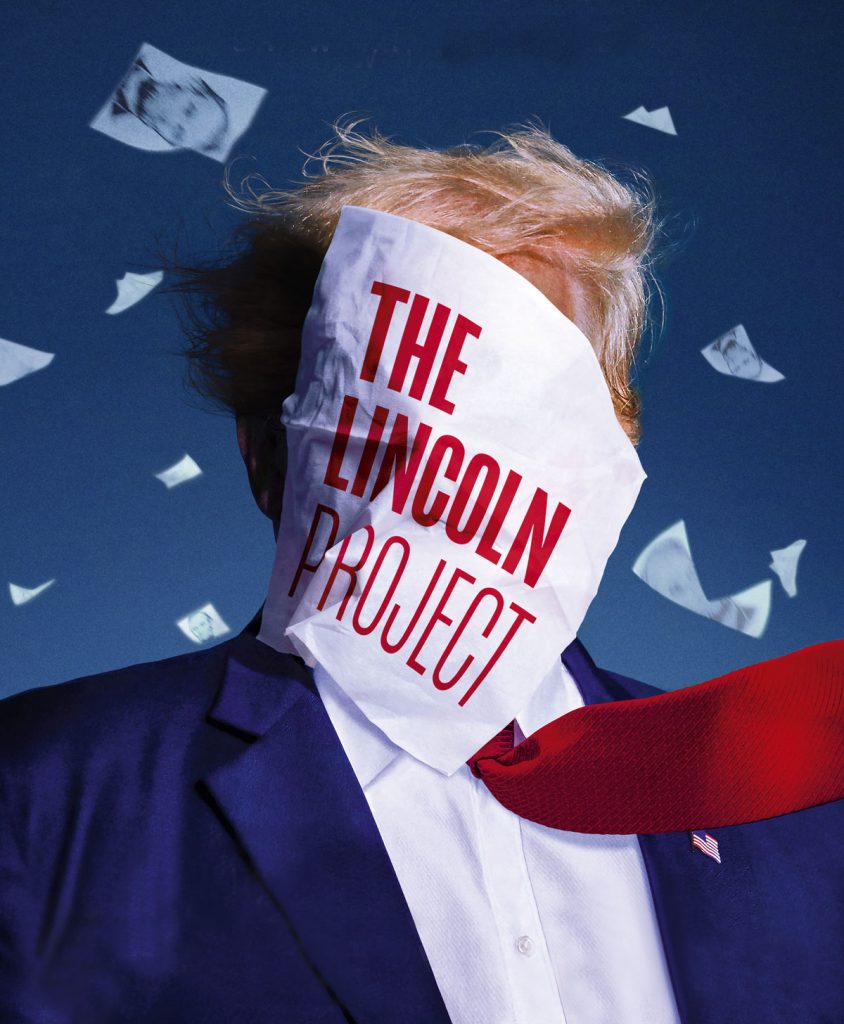
After more than 35 years of operation, TBI is closing its doors and our website will no longer be updated daily. Thank you for all of your support.
The future for docuseries: Time for a reset
Docuseries have exploded over recent years but rampant competition, rising costs and squeezed budgets are now impacting producers, writes Nick Edwards
Streaming has redefined docuseries, allowing them to be consumed in hundreds of millions of homes around the world, but what does the future hold now the sector is undergoing cuts, consolidation and contraction?
The roots of docuseries go deeper than the current streaming era, of course. For many, they lead to the 1990s and former president of documentary films at HBO, Sheila Nevins. She decided that unlike much of the documentary output at the time – considered to be informative and cause-driven but somewhat dry – HBO docs should veer towards ‘docutainment’. They would have a particular emphasis on exploring life from the perspective of those at the margins of society; substance abusers, cult victims, mass murderers, con artists, and so on.
One of her significant early commissions was Paradise Lost (1996), in which three teenagers are falsely accused of murdering three eight-year-olds after performing satanic sexual rituals on them. As public interest and evidence of a mistrial grew, she commissioned two further features that followed the characters into middle age. The trilogy was an early evolutionary step in docuseries, with the slow burn narrative structure extended again (to 10 episodes) with Jean-Xavier de Lestrade’s The Staircase, which aired on France’s Canal+ in 2004.
The foundations of docuseries were built in cable, but unlike scripted, the medium came of age during the streaming era. HBO’s 2015 commission of The Jinx made it a pivotal year. “We had the original idea when streaming was very young,” says Marc Smerling, creator of the series about Bob Durst, the son of a real estate mogul suspected of killing his wife (and others).
“We had a hard time getting all the story into one film, even at two and a half hours. It was also a little boring. When we cut it down, it was just a procedural,” he continues. “We went to lunch with the editor and we were talking about House Of Cards, and I said, ‘Now, if we could do that we could have our cake and eat it. If we could just stretch the story out, we could have all the plot points behind all the murders that took place over so many years, but we could also keep all the quirky detail as well as all the emotional storytelling.”
The Jinx coalesced many of the medium’s previous developments whilst also incorporating high-end recreations. “We spent our time figuring out how to tell the story visually, rather than just re-enacting multiple murder scenes,” says Smerling, who was behind feature docs such as Capturing The Freidmans and Catfish. And in the same year as The Jinx came the 10-episode Making A Murderer from Netflix, which took over 10 years to film. Together with books, podcasts and films, these two docuseries solidified ‘true crime’ as a genre in the public consciousness.
Tech & awe
As streaming evolved, tech became a distinguishing narrative feature in many of the most iconic docuseries.
“The abundance of digital artefacts accrued in even the most mundane moments of our lives reflects how important our digital lives have become to our sense of self, ” says Dimitri Doganis, founder of Raw TV, the company behind Don’t F**K With Cats: Hunting An Internet Killer (2019) and The Tinder Swindler (2022).
Tech has been driving docuseries in manifold ways, he says. “Podcasts like Serial proved that with the right distribution system there was an audience of scale for deep dives into what would previously have been considered very niche subject areas.
“This made filmmakers, commissioners and financiers sit up and take notice. At the same time, feature documentaries started to go from a more niche to a more mainstream position.”
“There’s greater competition for stories and an influx of middle-men snapping up peoples’ life rights, or rights to articles, or video footage and then trying to sell those on at profit” Dimitri Doganis, Raw TV
Features that sparked this popularity includes Man On Wire (2008), The Imposter (2012) and Three Identical Strangers (2018), the latter two both from Raw. “Because these things sit on streamers, audiences are enabled to get excited about them, find them and share them, way beyond what was previously possible – so, spreading word of mouth globally.”
“The ability to design and shape content is something that OTT’s have gotten stronger at,” adds Samira Kanwar of Vice Studios India, whose latest series for Amazon, Cinema, Marte Dum Tak! (Cinema Till I Die), was rolled out globally. “It’s a constant experimentation and re-examining of data and numbers to land on what audiences want,” she says.
“Streamers also bring budgets that enable and facilitate much higher levels of ambition in terms of production values, research and development time,” says Doganis. “If you’d have tried to make The Tinder Swindler for a traditional outlet, such as BBC Two or Channel 4, you’d have had a fraction of the budget.”
Importantly, budgets of even the most opulent docuseries are still dwarfed by those of scripted. Netflix’s Tiger King also marked a moment of frenzy, with subscriber growth during the pandemic leading to a dash for growth, as streamers expanded orders.
But as with every industry, when a boom occurs, many move in.“The boom in premium brought in a lot of Hollywood companies who set up documentary divisions,” says Roy Ackerman, head of documentary films at The Othrs, which made HBO’s The Vow and Showtime’s The Lincoln Project.
“Those companies hire documentary makers but they don’t always understand the challenge of a documentary,” he says. “A documentary is ‘slow cooked’, a lot of the best feature documentaries you see on screen today have a gestation period of years.” The Vow’s exploration of the NXIVM cult and its leader Keith Raniere spanned 15 episodes and two seasons.
Like The Vow, many of HBO’s best docs of recent years remain true to Nevins’ original vision; Life Of Crime (2021) follows a group of New Jersey heroin addicts over three decades; The Inventor: Out For Blood In Silicon Valley (2019) chronicles the rise and fall of a ‘miracle’ cancer cure purveyor; and I’ll Be Gone In The Dark tackles an author’s all-consuming investigation into the Golden State Killer.
Soaring expectations & costs
As the amount of content grew, quality rose as did audience expectations. “The cost of narrative docuseries has exploded over recent years,” says Christian Beetz, CEO of Gebrüder Beetz Filmproduktion, which made Netflix’s first German original docuseries, A Perfect Crime. “The audience expects something they have never seen before,” he says, adding that requirements such as 4K with Dolby Sound and HDR quality also add expense.
“There’s greater competition for some of the basic building blocks, most critically good people,” continues Doganis. “But there’s also greater competition for stories. What you’ve seen is an influx of middle-men snapping up peoples’ life rights, or rights to articles, or video footage and then trying to sell those on at profit.”
When rival cable channels and streamers were establishing themselves, the focus was on making their brands destinations for high-quality content. “Now, the focus is less on pure reputational projects. Like any content platform, they want to make sure they have a lot of eyeballs on their content,” says Ackerman.
A more industrialised model has emerged. “There can be very rigid parameters,” says Smerling, who outlines how per episode costs and showrunner allowances have squeezed autonomy. This is not the model that has underpinned docuseries success. When Smerling wants complete creative freedom, he now also turns to podcasts with projects such as Crimetown.

Juan Carlos – Downfall of the King © gebrueder beetz filmproduktion, picture alliance, ASSOCIATED PRESS, Daniel Ochoa de Olza, 2023
“If you want to tell a story with a complex character you need to shoot a lot. You need to follow storylines as they are unfolding, and you might end up with an end that you can’t use, or you might end up with no ‘end’ at all,” says Beetz. Gebrüder Beetz’s next project is Juan Carlos: Downfall Of The King for Sky Deutschland due to debut at Canneseries in April.
‘The great reset’
There is also a perception that many commissioners’ overriding concerns lie around delivering on time and making productions as salacious as possible. There is also an eye on exploiting IP further, such as producing a scripted version and a companion documentary.
“I think entertainment does get prioritised. We need to be entertained and use content as an escape. So, I don’t begrudge that at all,” says Vice’s Kanwar, whose Indian Predator was picked up by Netflix globally. “However, we do need to make more room for the untold, important stories – which may not be a form of escapism but serve other purposes of empathy and an understanding of the human condition.”
This can be what separates the best and worst of the driving genre of docu-series, true crime.
“You’ve got to lift it above the crime itself and the characters involved such as the intrepid cop and the murderer,” says Smerling. “You’re looking for the undercurrents. The chase of the criminal is always compelling but if you want to transcend that element, you have to connect with your audience at another level.”
The Jinx, he says, “is about how the rich get away with murder.” Last year’s Mind Over Murder from HBO, on which Smerling was an executive producer, is about “the fragility of memory,” he says.
“It could be a really interesting idea but if it’s not compelling or entertaining, it’s not going to go right now – we’re focusing on ideas that have a chance in very choppy seas. I call it the ‘great reset’” Roy Ackerman, The Othrs
And while increased costs are now embedded, along with increased competition, demand is contracting. Many of the outlets that pioneered high-end docuseries and single features, such as CNN, Showtime and HBO, have been most affected by cuts. Amazon, Apple and YouTube are also likely to be assessing how important documentaries are to their overall businesses, as they are not their core offerings.
And while Netflix may stay the course, it is unlikely it will be commissioning enough to compensate for the overall contraction from other buyers. Challenging times are underscored by well-received documentary features not being picked up by streamers at festivals.
“Six or seven of our favourite buyers have left their jobs or their situations have changed,” says Ackerman. “There are things we could have pitched two years ago that might have gone through but won’t now.”
Now, the prevailing attitude amongst commissioners is ‘fewer, bigger, better’ – but how do companies continue to tell the kind of stories that made docuseries great in the first place?
The approach has to be “tougher and better,” says Ackerman. “We’re always looking at 20 or 30 ideas. It could be really interesting but if it’s not compelling or entertaining it’s not going to go right now. We’re focusing on the ones that have a chance in very choppy seas. I call it the ‘great reset’.”






